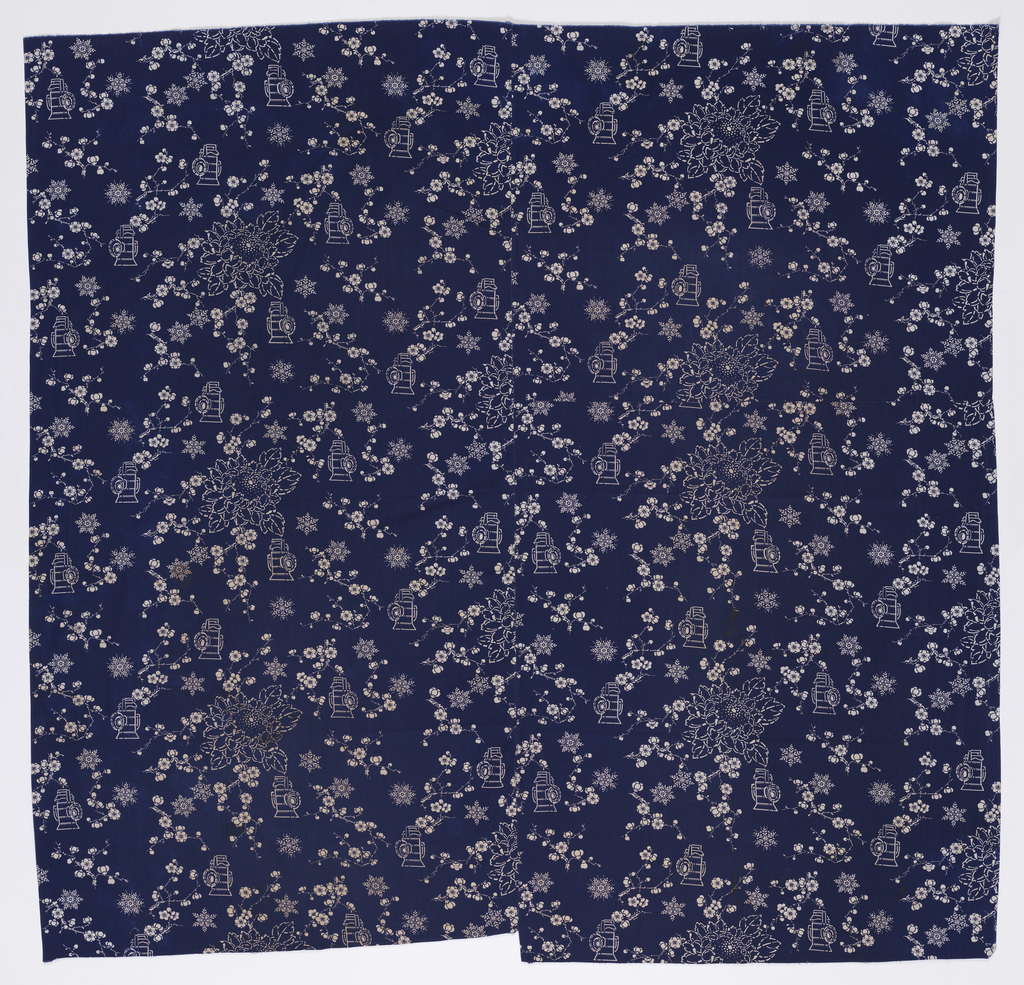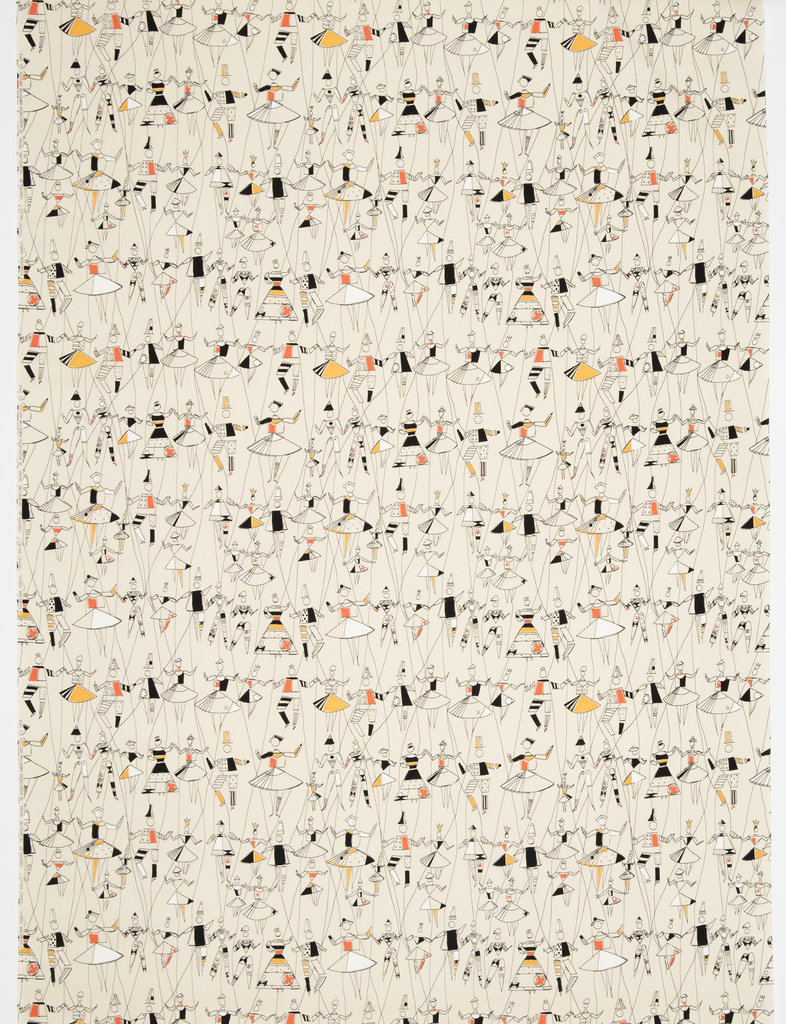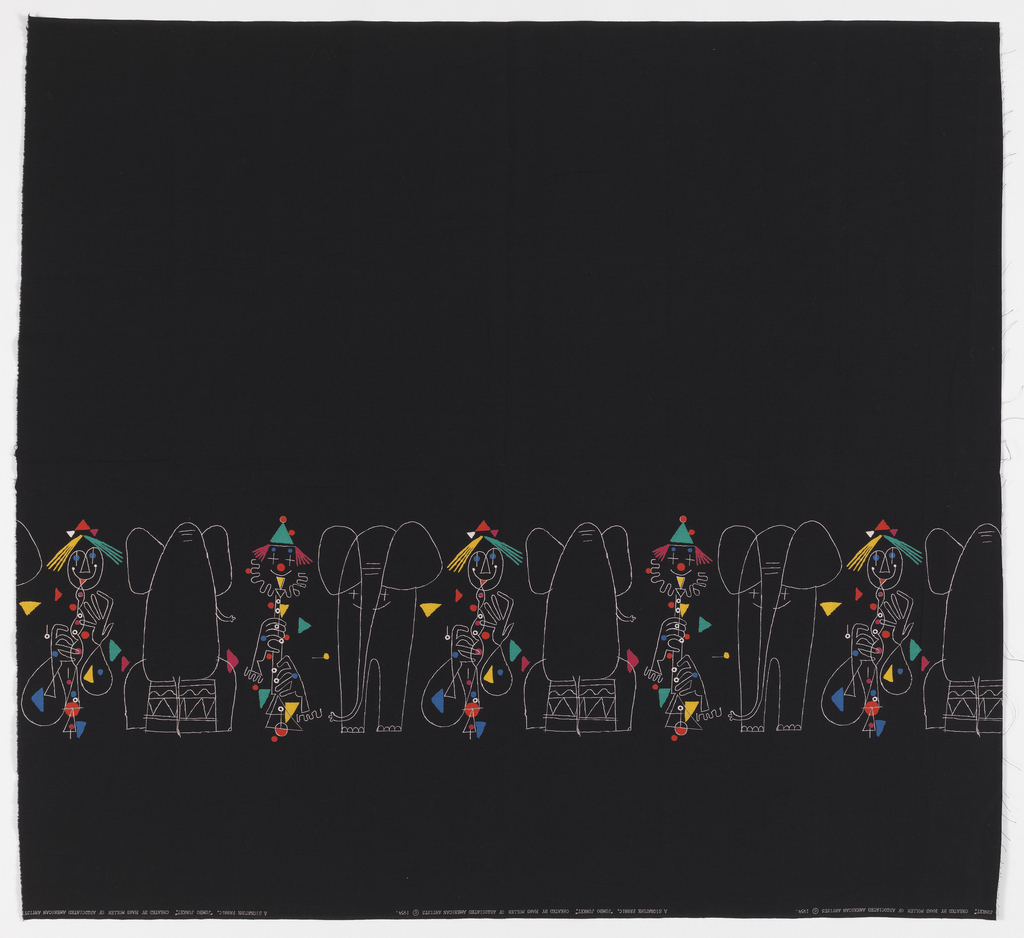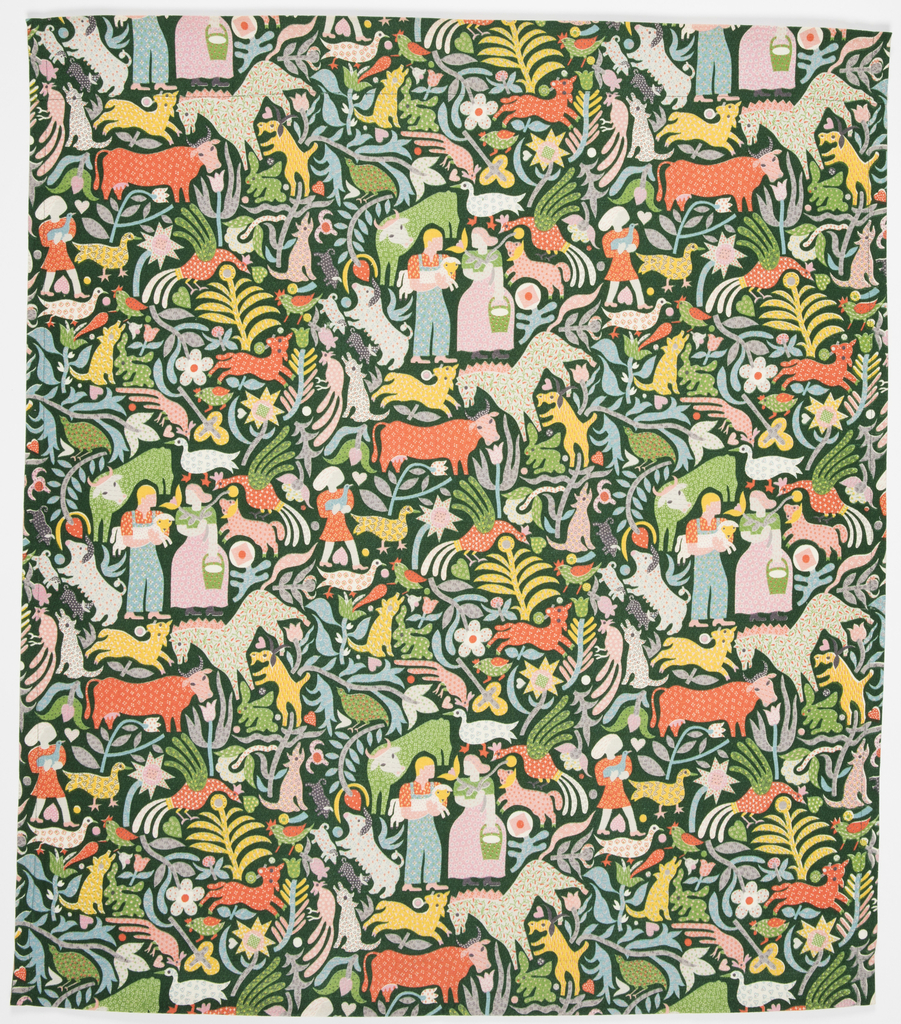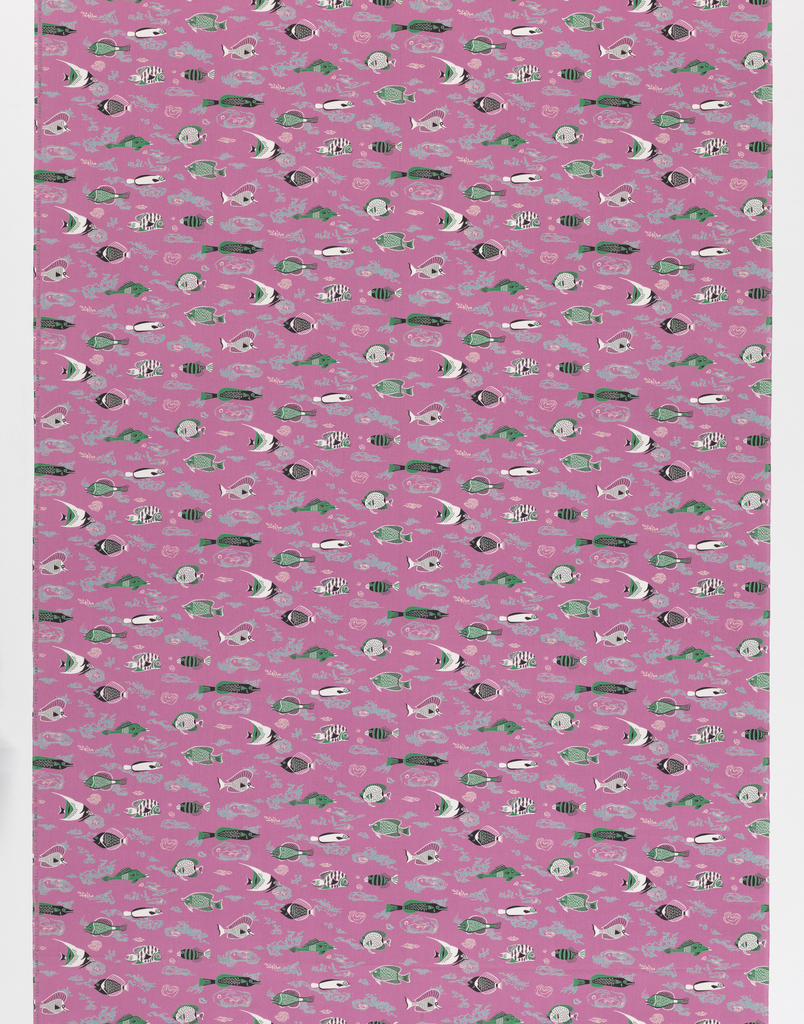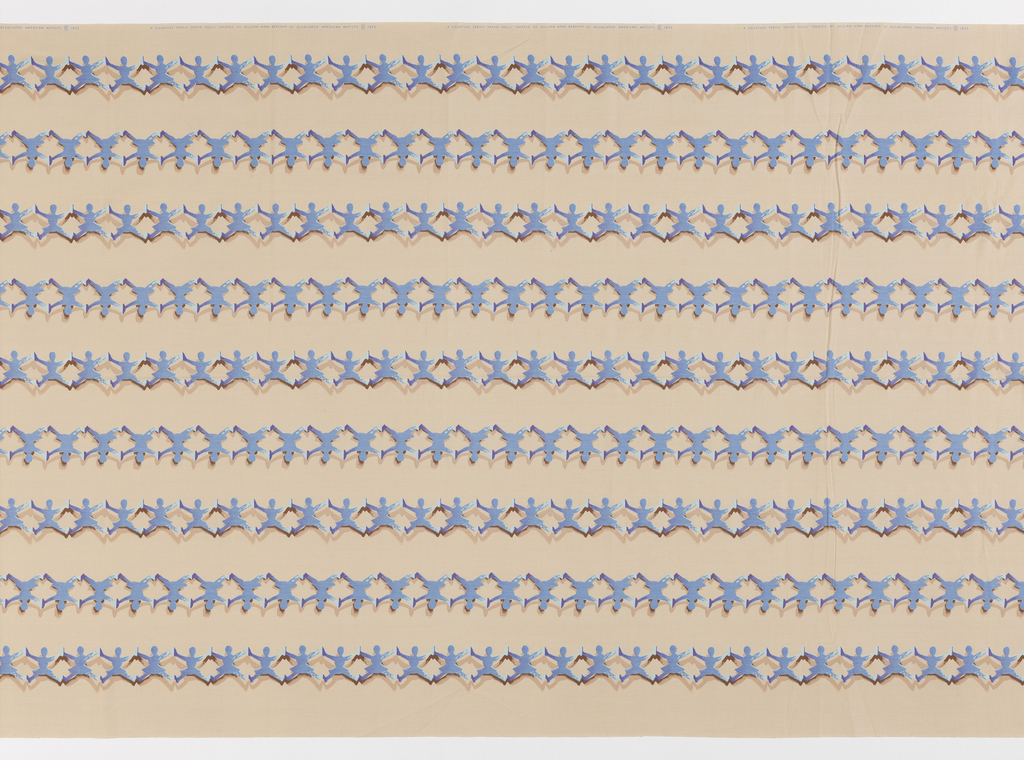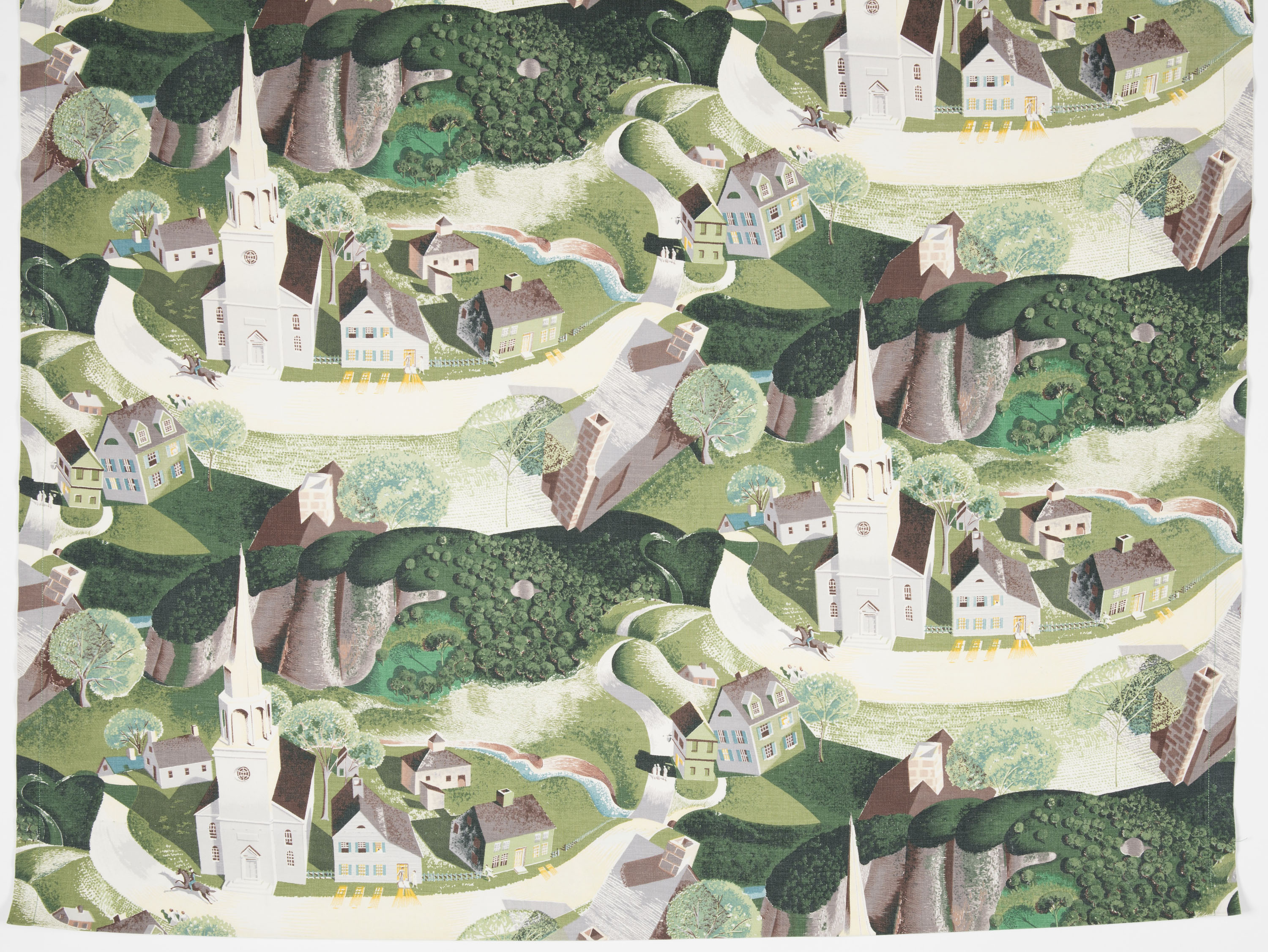This cotton quilt cover is based on The Legend of the Red Lantern, one of the Eight Model plays promoted during the Cultural Revolution in China, as they promoted the ideals of communism. (By the end of the Cultural Revolution, there were 18 approved plays and ballets.) The plot of The Legend of the Red...
Jacqueline Groag was one of the United Kingdom’s most influential post-war textile designers. She began her career at the famed Wiener Werkstätte in Vienna before designing and producing hand-printed textiles for some of the top Parisian fashion houses, including Chanel, Lanvin, Worth, Schiaparelli, and Poiret. She was also one of only a few of the...
Hans Moller, the German-born abstractionist known as a colorist, brought his predilection for vivid hues to his textile designs. His work was part of an assortment of imaginative midcentury designs produced by M. Lowenstein & Sons in partnership with Associated American Artists, a collective dedicated to creating accessible art. In Jumbo Junket, Moller’s circus-themed border...
In 2005, The New York Times reported that expressionist artist Vincent Malta, age 83, was beginning to achieve success in making a living as an artist.(1) A longtime teacher at the Art Students League of New York whose paintings appeared in galleries from time to time, Malta filled the gaps in his showing career by...
The issue of The New Yorker dated August 19, 1944 had a curiously wholesome cover. A farmer, holding a lamb, and his wife, armed with a bucket, were surrounded by farm animals and flowers. They were faceless and a bit flat, but expressive nonetheless, with the appearance of having been cut from bright calico cottons...
Painter and commercial illustrator Richard Munsell began creating advertising artwork for Maxwell House in the 1940s. His ads, the best known of which depicts coffee time at a living-room sewing bee, appeared within a series entitled “Part of the American Scene.” He also designed textiles that appealed to the American experience: lazy summer days spent...
In Paper Dolls, one of many trompe-l’oeil designs by William Ward Beecher, blue paper cut-outs join at the hands and feet in the form of a child’s paper chain. The figures cast shadows on the beige ground behind them, so that they appear to hover above the surface. The February 17, 1953 issue of Women’s...
Grant Wood is best known for his iconic 1930 painting, “American Gothic,” in which an unsmiling and oddly flattened couple, rather humorous in their solemnity, pose with a pitchfork in front of their farmhouse. Wood was a great proponent of the American regionalist movement, made up of rural, mostly Midwestern artists who tended to paint...
